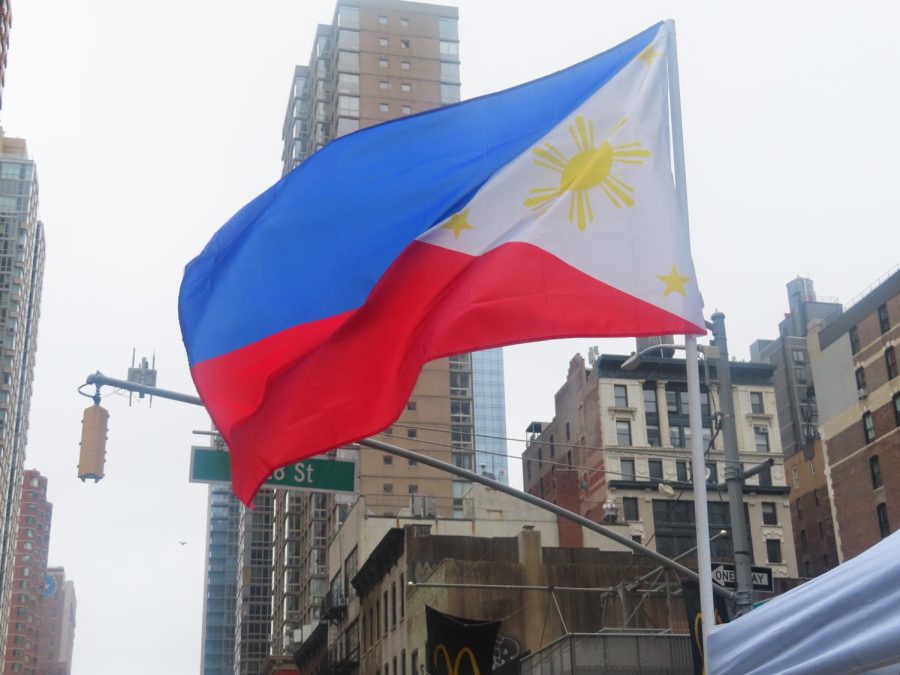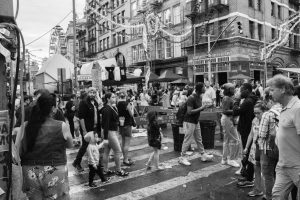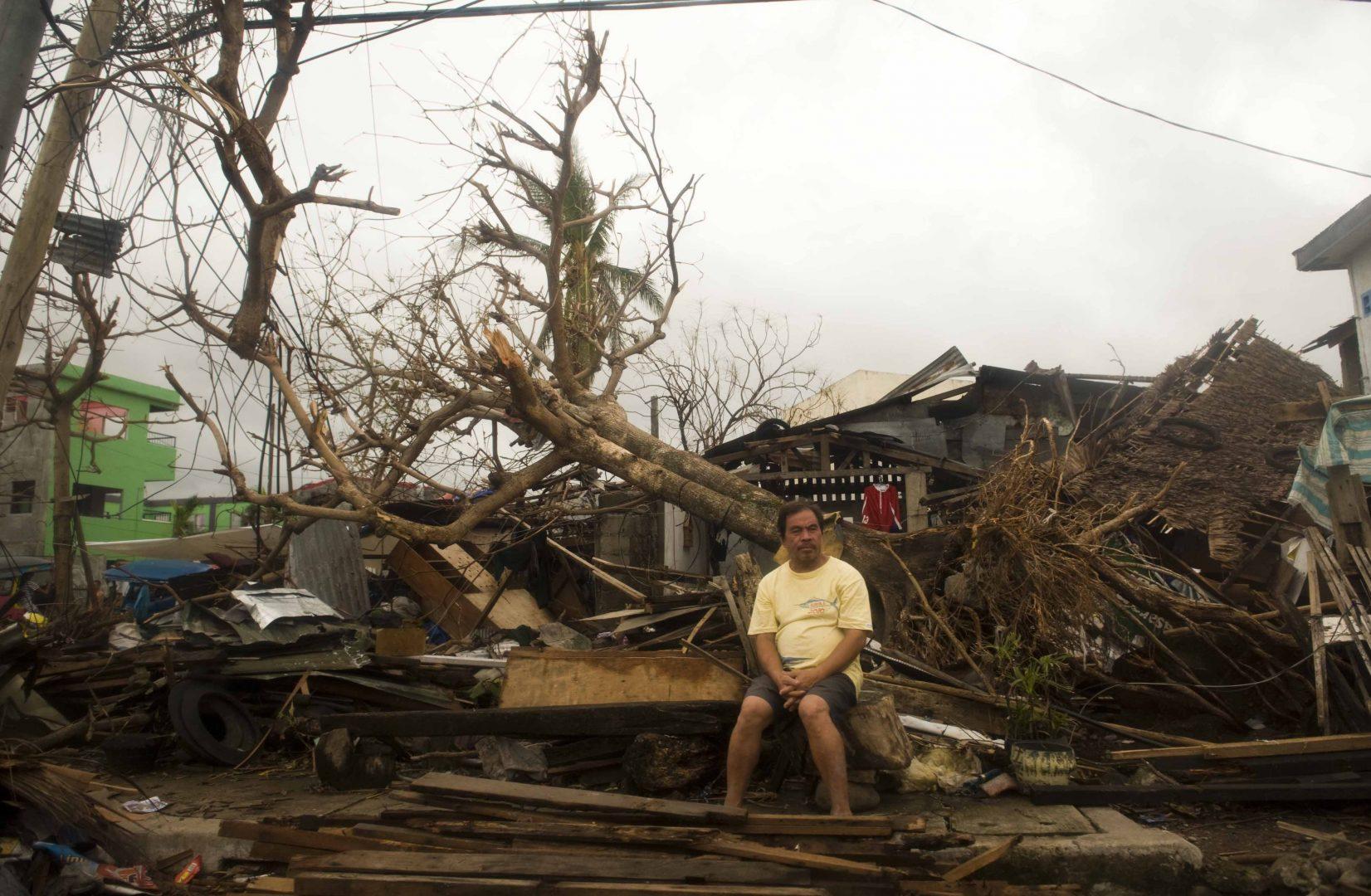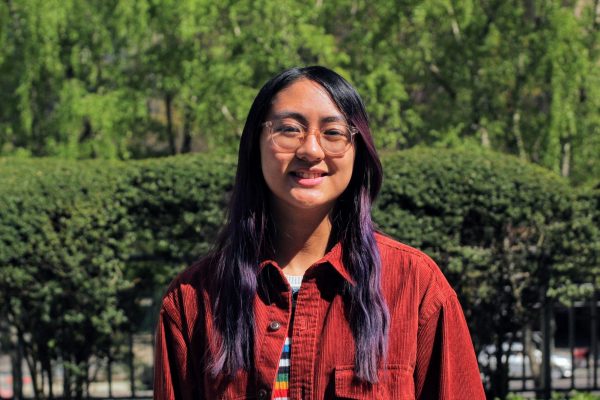From an American and a Native Pinoy: It’s More Fun at Philippines Fest
The street fair brought attention to Filipino-run businesses across New York City at its first Chelsea location
The Filipino flag waved above every tent. According to Augelyn “Augee” Francisco, many people came up to her and asked where the flag was from.
May 3, 2023
With spring fully sprung and summer in view, street fairs are popping up all over New York City. Among the dozens of fairs, Philippines Fest joined the stage on April 15 in downtown Manhattan from 10 a.m. to 6 p.m. The festival featured Filipino-run restaurants, food vendors and artists.
Established in August 2022, Philippines Fest came about through the efforts of three Filipino business owners: Augelyn “Augee” Francisco, chef and owner of Kabisera in the Lower East Side; VJ Navarro, co-founder of pop-up vendor So Sarap NYC currently featured at Smorgasburg food festival in Williamsburg; and Paulo Manaid, owner of contemporary fashion store Hatzumomo. Alongside them are Daniel Corpuz, a chocolatier and owner of Daniel Corpuz Chocolatier, and Craig Nisperos, photographer and historian for the Philippines Fest. The group aims to provide a platform for Filipino-centric and Filipino-run small businesses to be featured on the metro New York street fair scene.
The fair took place between 27th and 28th streets on 6th Avenue, and despite the heavy chance of rain that day, people from various cultural backgrounds crowded the streets. Tents housed eager and welcoming business owners with the Filipino flag flowing from the top. One of the tents was a karaoke station, an integral staple during any Filipino celebration.
Representation and an introduction to Filipino culture was a common theme reiterated by the co-organizers and entrepreneurs of the street fair.
Having previous experience cooking with traditional foods from different cuisines, Francisco explained that marketing Filipino goods is different compared to Japanese or Chinese food because it isn’t as widely loved and known. She added that to be able to have a Philippines Fest shows that Filipino businesses are able to appeal to people of any culture, not just Pinoy (people of Filipino descent).
With the festival having been located in Chelsea, Francisco emphasized how much the traffic in one of New York’s popular neighborhoods could bring exposure to Filipino culture and small businesses. “There is really that part of being overshadowed, or unrecognized, unseen, unheard,” she explained. “However, what is special about Filipino businesses is also that it’s very rare. People go and find us. And the neighborhood where we are at, people are very open.”
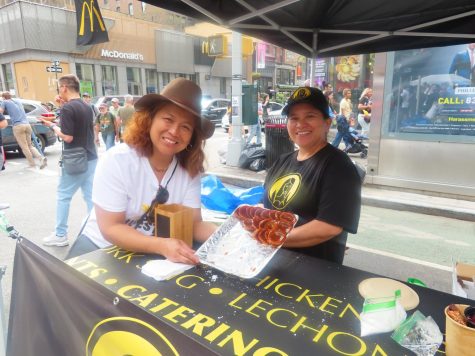
Representation and an introduction to Filipino culture was a common theme reiterated by the co-organizers and entrepreneurs of the street fair. Though the Filipino community in New York City is not as large as it is in other U.S. states, it is sizable. According to the Pew Research Center, the population in 2019 was 236,000 Filipinos. Fordham itself has a growing community of Filipinos who are active in student involvement, such as through the club Filipinos of Lincoln Cente Offering Welcome (FLOW) and seeking to have their culture recognized more on campus.
Elizabeth Gorai, owner of Asian fusion pop-up Mama T in Harlem, described how awareness was so important during the COVID-19 pandemic, when there was a serious increase in discrimination and violence against those of Asian descent. Philippines Fest provides a platform for Filipinos to combat ignorance by sharing their talent through food and crafts.
Questions of representation aside, what can Philippines Fest offer non-Filipinos? It is a worthy introduction to an unfamiliar culture. The Philippines is a former longtime colony of both Spain and the United States, and has historically been influenced by its neighbors and through trade. Although elements of Chinese, Indian and Mexican cultures have been adapted into the country, the Philippines has not lost its native Southeast Asian roots, making it a fascinating site of both diversity and cultural blending.
According to Gorai, this long history has made Filipino food special. “It’s really a fusion of so many different cuisines, East and West combined. So I think what makes Philippine cuisine so unique is we have flavors from other places that we make something of our own.”
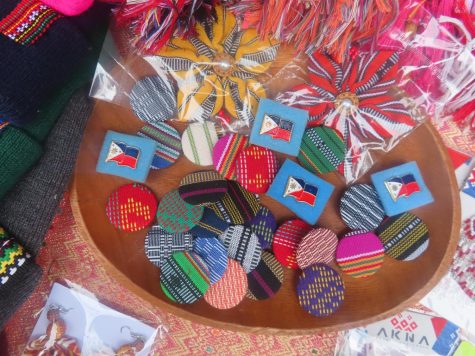
And it seems that this fusion of cuisines was well-received at Philippines Fest. One of Mama T’s specialties – Ado bowl – sold out only halfway through the street fair. The rice bowl, a combination of Spanish-derived saffron rice topped with Filipino adobo (a stock made with soy sauce, vinegar and garlic), is one of the best examples of gastronomic intersection between West and Southeast Asia.
Mama T was not the only tent bustling with business. Another stand assisted by Francisco, “Patok by Rach,” had an endless stream of customers. Within 10 minutes, the stand had sold two full baking pans of kutsinta, a steamed rice cake found throughout the Philippines. We ourselves bought five pieces, and they were delicious.
Another stand, Sisig ng Bayan, closed early because they ran out of their main dish, “sisig,” a popular northern Filipino dish made of crispy pork cheeks cooked in soy sauce, onions, citrus and peppers. Several other pop-ups sold out long before the end of the fest as well, not anticipating the overwhelming reception and turnout from New Yorkers.
“It’s really a fusion of so many different cuisines, East and West combined.”Elizabeth Gorai, owner of Asian fusion pop-up Mama T
For those willing to go even more outside their comfort zone, So Sarap NYC offers classic Filipino street food such as barbecue, “isaw” (chicken intestines), “kwek-kwek” (quail eggs) and “balut” (fermented duck embryo). Though people new to this kind of fare may be hesitant to try it, the only thing that was daunting was the incredibly long line of customers that sometimes stretched half the block.
At Philippines Fest, it was not only the customers who were in an experimental mood. Whitnee Arenas, the owner of juice store Logan & Co, had just started her business that very day and plans to collaborate with other vendors over the summer. Logan & Co sold juice made of calamansi, a native Filipino fruit that is said to taste like a cross between a lime and an orange. The store also presented its own twist on the classic beverage, offering calamansi mixed with hibiscus, ginger-mint and ube (purple yam).

Corpuz also wanted to provide the festival’s visitors with a variety of Daniel Corpuz Chocolatier chocolates to choose from. Corpuz was the youngest and only Asian contestant in the first season of the Netflix show “School of Chocolate,” and as a formally trained chef who worked in Michelin-starred restaurants, he seeks to incorporate the flavors of the Philippines into his own creations, the most popular being bon-bons.
The chef crafts artisanal chocolate using specifically Filipino ingredients such as pandan (described as a sweet lemongrass), ube and calamansi. The chef eagerly stated that authentic innovation is at the heart of his work when he develops new flavors. “It is a true representation of what I grew up with, as well as Filipino desserts transformed into a piece of chocolate.”
Aside from food, the fair also had different tents where artists sold merchandise to customers. Manaid sold Filipino apparel from his brand Natibo Atmp. His business, Hatzumono, creates contemporary clothes and accessories with traditional Filipino handwoven textiles.
Another tent featured Alice Xie, the artist behind Meloncholy, and sisters Kristin and Ria Salvacion, co-owners of Kriation Studios. Collectively, Xie and the Salvacion sisters sold their original art which included stickers, washi tape, lanyards, art prints and more. In particular, Kriation Studios had custom anime and bubble-tea themed crewnecks. Beside them was Pinoy of America, a shop selling simple yet beautiful Filipino-inspired jewelry and accessories, each of which incorporated the iconic sun from the Filipino flag into its design.
The co-organizers of Philippines Fest hope to have a fair every month. The location and dates of their upcoming fairs include one in Park Slope, Brooklyn, on May 21 and the other in Times Square on July 9. According to Francisco, however, the goal is to not be confined to New York City with plans in place to host festivals in Virginia and Southern California.

